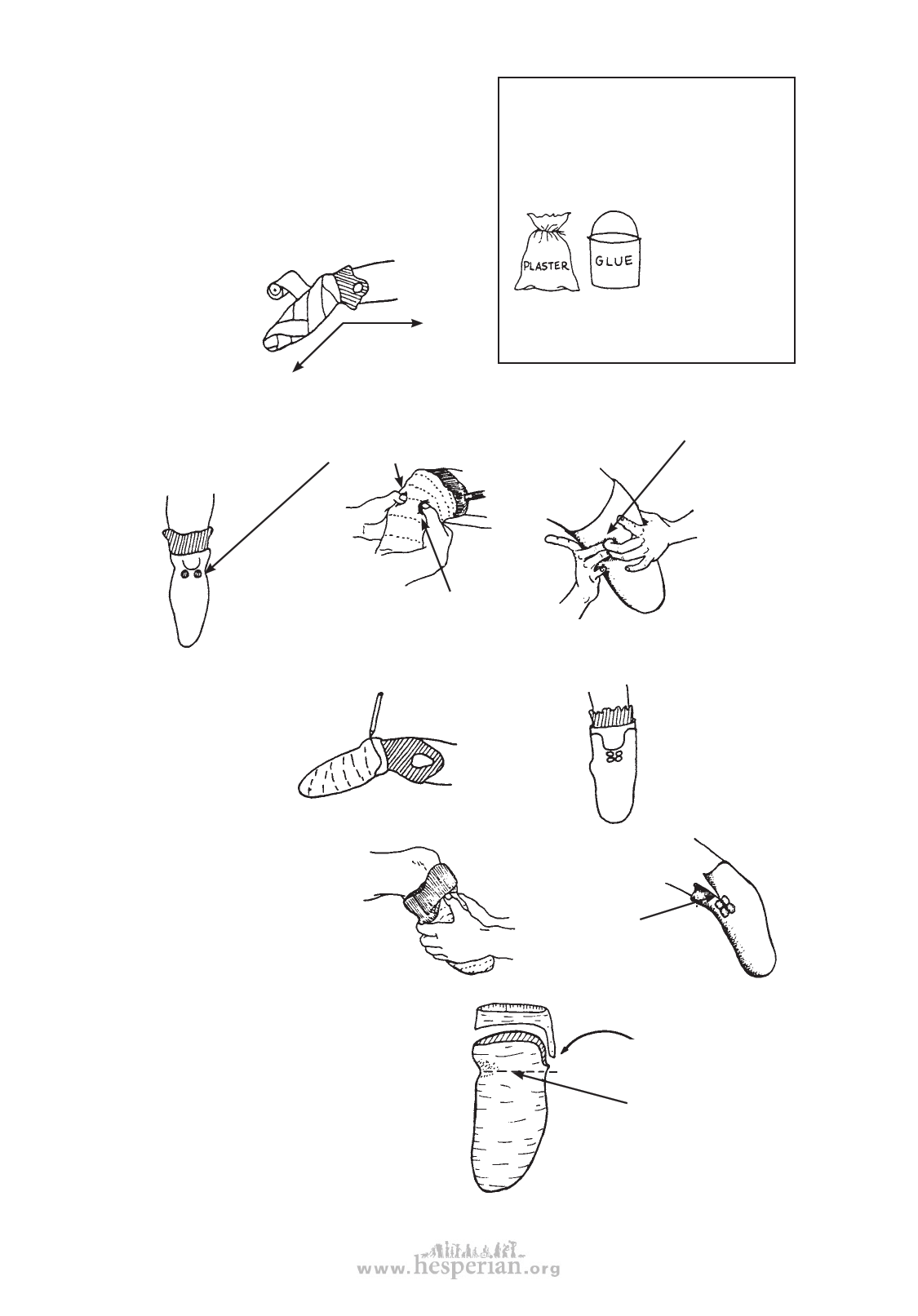
6. Wrap the stump and knee with plaster
bandage. Be very careful to put the
bandage on evenly and smoothly.
(Elastic plaster bandage works best,
but is very costly. To reduce costs
you can make your own plaster
bandages for casting. See p. 569.)
Cast the knee
with the stump
slightly bent.
Keep the knee at
about this angle.
ARTIFICIAL LEGS 629
MAKING THE PLASTER WATER-RESISTANT
The plaster cast of the stump will
become the inner layer of the socket of
the bamboo limb. So it should be strong
and waterproof. To make the cast stronger
and water-resistant, wet the plaster
bandage with glue instead of water.
Use a water-base glue
that is water-resistant
when it dries.
Note: If the plaster cast is to be used
only as a mold for making a leather
or resin socket, use water, not glue.
7. As the plaster
dries, hold the
stump firmly
below the knee.
Press your thumbs
on each side of the
tendon just below
the kneecap.
FRONT
VIEW
BACK
VIEW
With the 2 middle
fingers of each
hand, press into
the hollow behind
the knee.
With the ball of the hand,
press gently on the muscles
on both sides of the leg.
8. When the cast
becomes hard,
mark where to
cut the top edge
(see below).
SIDE VIEW
9. To remove the cast,
roll the stocking over it.
Put your hands over the
pressure points (as shown
above). Have the child
wiggle the stump as you
gently pull off the cast.
10. Cut the cast along
the line you drew.
{3 to 4 cm.
Hold the stump
like this until
the plaster is
hard enough to
hold its shape.
BACK VIEW
It may be necessary
to cut the cast
behind the knee,
like this, to get
it off.
} 1 cm.
The dip behind the knee
should reach at most
1/2 cm. above a line
passing through the
mid-point of the kneecap
tendon.
disabled village children